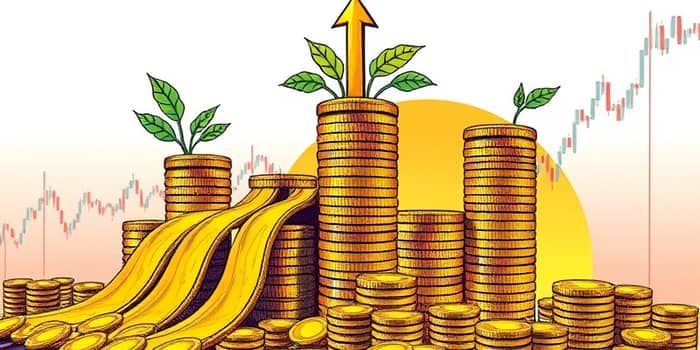
In a world of economic headwinds, investors are increasingly seeking ways to protect their portfolios from extreme volatility and erosion of purchasing power. One strategy has gained particular traction: targeting companies that not only pay dividends but have a consistent record of dividend increases. These dividend growth stocks offer a unique combination of income reliability, long-term growth potential, and market resilience. As inflation persists, central banks navigate complex policy decisions, and global uncertainties abound, defensive capital is gravitating toward these dependable businesses. This article explores the reasons behind this shift, examines historical performance, evaluates key trade-offs versus high-yield alternatives, and offers practical insights for investors considering this approach.
The investment landscape of 2025 is defined by a confluence of challenges. After years of accommodative monetary policy followed by rapid rate hikes, fixed-income returns have improved but still struggle to keep pace with inflation. Equity markets continue to exhibit significant swings, driven by geopolitical tensions, supply chain disruptions, and shifting consumer demand. In response, institutional and individual investors alike have reallocated capital toward more conservative segments, emphasizing stability and income over pure growth. Dividend growth stocks, largely drawn from defensive sectors such as utilities, consumer staples, and healthcare, have emerged as prime beneficiaries of this trend. These stocks combine the upside of equity ownership with the defensive qualities of an income-oriented strategy.
Within this environment, funds specifically designed to deliver growing dividend streams have seen net inflows, reflecting the growing appetite for strategies that can weather economic turbulence while continuing to reward shareholders.
At their core, dividend growth stocks represent companies with robust business models, consistent cash flows, and conservative financial policies. Firms that can increase dividends annually for extended periods typically possess durable competitive advantages, enabling them to maintain profitability across cycles. This resilience translates into higher stability in down markets when share prices are under pressure. Furthermore, managers of these companies often prioritize returning capital to shareholders, signaling confidence in their future earnings prospects.
By emphasizing quality and income, dividend growth investors seek to reduce overall portfolio volatility while generating a steadily increasing income stream.
Empirical evidence underscores the defensive advantage of dividend growth equities. During the sharp market corrections of 2022 and 2023, portfolios weighted toward dividend growers experienced declines approximately 30–40% less severe than those of the S&P 500. Despite falling share prices, dividends continued to flow, cushioning total return declines and providing investors with liquid cash to reinvest or cover expenses. Over the 16-year period ending in 2024, selected US and Canadian dividend growth stocks outperformed their high-yield counterparts in both income growth and total returns, while also delivering superior risk-adjusted outcomes.
This track record demonstrates that companies capable of sustained dividend increases often possess stronger balance sheets and management teams skilled at navigating economic headwinds.
While high-yield stocks can be appealing for investors seeking maximum immediate income, they frequently carry elevated risk and limited upside. In contrast, dividend growth stocks may offer lower initial yields but provide a path to a higher yield on cost over time. By reinvesting dividend increases, shareholders can compound returns more effectively than by chasing static high yields. Furthermore, dividend growers often exhibit lower payout ratios and less leverage, granting them greater flexibility to maintain distributions during downturns.
For many investors, the security of predictable, rising income outweighs the allure of high-yield but potentially unstable payouts.
Investors have gravitated toward sectors inherently suited to dividend growth strategies. Utilities, consumer staples, and healthcare companies typically exhibit stable demand, regulated or necessity-driven revenue streams, and strong free cash flow generation. Within these sectors, the prestigious “dividend aristocrats”—firms with at least 25 consecutive years of dividend increases—have become focal points for defensive capital.
Geographically, the US and Canada dominate the dividend growth universe, but similar patterns are evident across developed European and Asia-Pacific markets. As global central banks contend with inflationary pressures and uncertain growth prospects, dividend growth equities continue to attract capital seeking both income and defensive characteristics.
For retirees and income-focused investors, maintaining spending power in the face of inflation is paramount. Fixed-income instruments may offer predictable payments, but rising prices can erode real returns. In contrast, dividend growth stocks provide an increasing income stream over time, helping to offset inflation’s impact. By reinvesting dividend growth, portfolios can compound distributions, enhancing sustainability and reducing the need to sell assets for income.
This strategy aligns well with a total return approach, where capital gains and dividend growth work in tandem to support long-term financial goals.
Despite their appeal, dividend strategies are subject to misconceptions. The “dividend fallacy” suggests that dividends alone dampen volatility, when in fact the underlying business quality drives risk reduction. Similarly, the belief that higher yields always equal better investments overlooks the potential for unsustainably high payouts to signal financial distress or limited growth opportunity. A disciplined focus on companies with robust fundamentals and dividend histories remains critical.
Investors should also guard against “yield chasing,” which can lead to exposure to high-risk sectors or speculative dividend promises.
Companies that consistently raise dividends share a number of defining attributes:
By prioritizing these characteristics, investors can build portfolios that combine income growth with structural defensiveness.
Looking ahead, the economic landscape remains rife with uncertainties: potential policy rate adjustments, geopolitical flashpoints, and evolving consumer behavior. Amid these dynamics, dividend growth stocks offer a compelling proposition for investors seeking stability and reliable income. While no strategy is immune to market fluctuations, the combination of income, quality, and defensiveness positions dividend growth equities as a core holding in many portfolios.
As defensive capital continues to seek safe yet rewarding opportunities, dividend growth stocks are poised to remain at the forefront of income-oriented investing. By focusing on companies with strong fundamentals and a history of rising payouts, investors can build resilient portfolios capable of withstanding volatility while capturing long-term growth.
References













